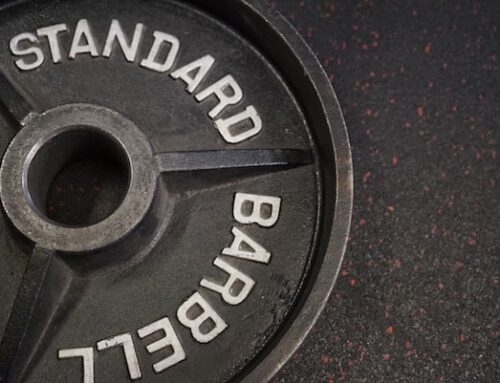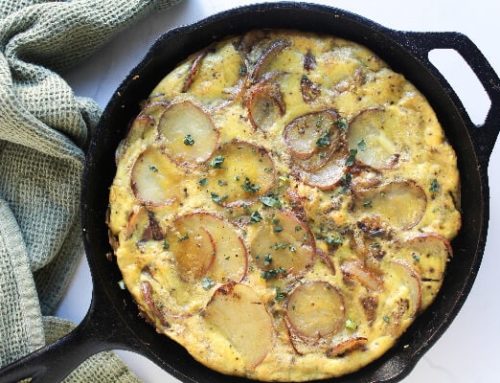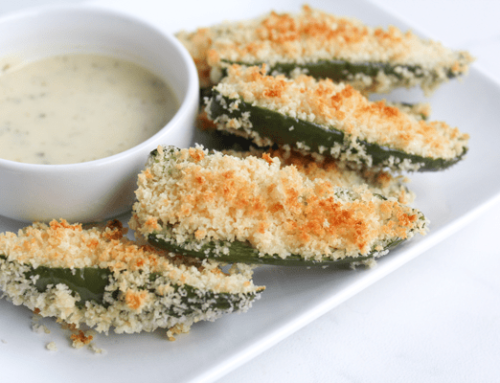
Tracking Macros is not a diet. It is a lifestyle. It allows you to enjoy all sorts of yummy foods like the picture above (which my the way you can find the recipe HERE).1 It is a way to keep track of how much food you are putting into your body, without any crazy restrictions on what types of food you eat. It is a way to know how many grams of proteins, fats and carbohydrates you are consuming. If it fits your macros (IIFYM), also known as flexible dieting, is an easy way to achieve an incredible physique and take advantage of the science behind nutrition. However, despite the overwhelming science behind flexible dieting, there is a lot of controversy around it.
THE PROBLEM WITH FLEXIBLE DIETING
For many women, flexible dieting is not flexible. Constantly being tied to an app and a food scale, tracking, measuring and analyzing the grams of carbohydrates, proteins and fats, seems and feels like an overwhelming task. In fact, for many individuals, tracking macronutrients seems like a never-ending journey of obsessing over food. But that’s not the case!
The problem that some have with flexible dieting isn’t with the nutritional principles, but rather, the way in which tracking your macros is done. Here’s the thing, I empathize with those who dislike tracking their macros, but I have to put my tough love hat on. TRACKING MACROS IS NOT THAT HARD.
For many, being tied to an app sucks, so how do you track your macros when you don’t want to be logging food on your phone all day? Easy, jot down some notes (ex: 1 cup brown rice) throughout the day and then log all your food all at once when you have time. Hate measuring your food? What’s the difference between placing all your food in a bowl and placing all your food in a bowl on top of the scale? Or, using a measuring cup as a scoop in your dry oatmeal container? It’s really not that hard.
I get it. Tracking your macros is a change in habit, but honestly it’s a habit worth changing.
Tracking your macros is such an amazing tool to help achieve your physique goals. There are no restrictions to certain foods – you can eat what you love, all while staying balanced and hitting your daily goals of protein, fat and carbs (you can also track things like grams of sugar and fiber). Tracking your macros is great for teaching proper portion sizes and how to eat the proper amount of macro and micronutrients for your body composition and goals. It is there to guide you through a reverse diet, and it can help you get back on track with your goals.
WHY TRACK YOUR MACROS?
If you are wanting to build more muscle, tracking your macros will help you know how many grams of each macro to add in or take away. Maybe you are looking to lean down, while keeping those badass muscles that you worked so hard to get! Tracking what you consume will help you know where you stand and help you decide how many grams of each macro to include in your daily consumption.
THE “SWEET SPOT”
Tracking can also help you build great eating habits, and help you to learn where your body’s “sweet spot” is. Learning your body’s “sweet spot” means you intuitively know how many grams of carbs, fats and proteins your body best responds to. For example, you’ll be able to add in carbs slowly until, one week, you can tell your jeans aren’t fitting quite the same. Then you know you surpassed your “sweet spot” and you need to pull your carbs back by a few grams to the step you were in right before your most recent increase – also known as your “sweet spot!”
For some women, macro tracking is what helped them have a positive relationship with food again. Eating what they love, but still within their macro goals!
Macro tracking is always an option for you during times when you have fallen way off track or have under-fueled for a long period of time. You don’t have to diet or guess, you just calculate your macros and slowly begin those great habits again. It is also an awesome tool to use if you aren’t sure where your daily calories or macros are at – you can track everything (the good, bad and ugly) and look back on how you have been eating in the past – this will help you figure out what you need to change in order to fix the issue that you may be having. It also helps you determine how long your reverse diet needs to be.
ALWAYS TRACKING, EVEN WHEN YOU’RE NOT
Even if you rebel against tracking macros (which many do), keep in mind that this is what your body does naturally! Yes, your body tracks macros. It knows how many grams of proteins, carbs, fats, sugars and fibers you consume and reacts accordingly. There’s NO way around that. So, tracking macros is a natural process where you are simply getting in tune with your body and communicating constantly with it so that you may both learn what is best for you together. Your body HATES it when you under-fuel, over-fuel, eat like shit, or don’t chill out and enjoy occasionally. It wants you to eat enough for how much (or little) you are lifting and exercising. In order to get to the bottom of that – YOU NEED TO TRACK. I’ve never understood why this becomes the enemy. Tracking macros is literally you saying to your temple, “I love you, and want to play along. Let’s do this!”
There is no tricking the human body. Planning in a daily treat, or favorite meal will help keep your cravings low, and keep you balanced. Tracking macros is there so you can have that big, juicy burger or cookie-ice cream sandwich, and still hit your goals (or at least be aware when you’ve blown past them or are constantly under them). It’s all about balance, and tracking your macros gives you that! With that being said, macro tracking is there to help guide you with what you need to fuel your body properly, it is not there to control you.
INTUITIVE TRACKING?
The longer you practice tracking your macros, the easier it will become. Tracking will help you learn the proper portion sizes needed for your specific body! When you have been tracking for a long time and are able to continuously hit your macros each day while tracking, it can then become a stepping stone to what I like to call “intuitive tracking.”
Intuitive tracking is what macro trackers graduate to. No, you don’t get to intuitively track or eat if you don’t have enough experience tracking macros (I’m talking 2+ years of consistency), have been off and on with tracking your macros, or have never tracked your macros. Eating intuitively to reach your physique goals isn’t possible if you don’t know your body’s “sweet spot” – which is only attained after putting in the work and tracking macros for a long period of time without breaks. For me, having tracked for many years, it is now possible to know what my proper portion sizes need to be in order to hit my goals. I am able to “do the math” in my head of what I am eating, without having to actually weigh or measure every morsel of food and log it. This is awesome for busy days, holidays or vacations. THIS IS WHERE YOU WANT TO GET TO. Being able to be flexible like this, yet knowing exactly what you are putting into your body takes a lot of practice, consistency and work. Remember, nothing worth having comes easy.
So, if you’re having trouble hitting your daily macro goals while Macro Tracking, you are not ready to intuitively track. Put the work in and have some patience with yourself, your body and the process! Intuitively tracking is a beautiful thing, but you must earn your place there.
Rebelling against your body’s natural process of wanting the correct amount of macros each day can make you prone to binges or view “not tracking” as a way to eat in a surplus without being held accountable for it. DO THE WORK!
THAT’S RIGHT, I DON’T TRACK MY MACROS
I have been consistently tracking my macros for years. I now know exactly what my body needs to maintain a killer physique, fuel my workouts, stay fit during and get fit after pregnancies and prepare for my photo shoots…ALL without tracking – only using Intuitive Tracking. I am able to do this because of the years of experience and work I put into my macro tracking.
When I feel like I am putting on more fat than I wish to, or I’m not building or maintaining my muscle as I wish to, I simply track my macros for two weeks to see where I may be lacking, and BAM – I find my answers. I find that I’m usually a little too low on protein and slightly high on carbs so I dust off my food scale and get back on track.
FLEXIBILITY FOR LIFE!
Macro Tracking is a great tool to use and practice every single day. Knowing exactly what your specific body needs for you to reach your goals is important! Learn great eating habits, learn what your body needs and learn how to fuel your body and workouts properly. It is meant to be a lifestyle, not a diet. Your body isn’t a calculator…but it is made to operate like a lean, mean, lifting machine and it wants you to consume the correct amount of macros and micros to get there. So, calculate, measure and track away. Over time, your body will LOVE you back and you’ll be able to chill out on it a bit and have flexibility in your “diet” for life!
If you want even more advice on flexible dieting, check out my Jessie’s Girls Training Programs. In each one of my training programs I walk you through the basics of nutrition, and how to train to get that amazing physique that you’ve always wanted. For more information on what my training programs have to offer, click on the button below.
1 Photo Credit: “5 healthy pancake recipes you can make at home: Tastes Good, Does Good“ by Push Doctor / Background changed from the original.






Leave A Comment
You must be logged in to post a comment.